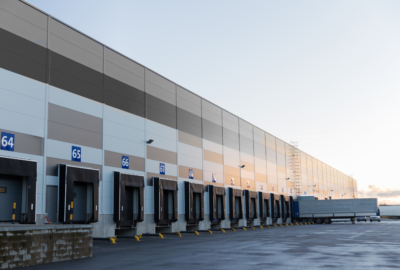Communication, Marketing
Fleets need to be disaster-ready as coronavirus outbreak takes hold
Little did I know while writing last month’s column on “potential speed bumps for supply chains in 2020” that we’d start the year on the cusp of a pandemic.
Hopefully by the time you read this the coronavirus is contained and off the front pages. Whether that is or isn’t the case, it’s good preventive medicine to ask how your business would handle a disruption to the global supply chain and a major health risk to your employees.
As I was looking around for information about this deadly outbreak, I came across a TEDTalk that Bill Gates gave in 2015. “If anything kills over 10 million people in the next few decades,” he said, “it’s most likely to be a highly infectious virus rather than a war.”
I’ll leave it to the medical experts to talk about the health effects of the coronavirus, but the shutdown of factories, air travel, and transit lines to and from manufacturing centers in China could have major implications for truckers here at home.
It reminds me of the lessons we learned at MSM Transportation when the SARS outbreak hit in 2003, and H1N1 in 2009. It’s a good time to dig up those response plans as we brace for a speed bump ahead
Closed for business
China, the world’s second-largest economy accounting for 17% of global GDP, essentially closed for business at the end of January. The government extended the Lunar New Year holiday—when the Chinese spend $145 billion on shopping and entertainment—and imposed travel restrictions in order to keep people home. Shipping schedules were cancelled and vessels idled in “floating quarantine zones” waiting for access to closed and restricted ports.
Supply chain suffering
As more infections are recorded outside of China, we’re seeing the effects on supply chains in Europe, North America, and elsewhere. Webasto shut down its main plant in Germany following four confirmed cases among its personnel. A full-blown pandemic would make our current freight recession seem like a holiday.
Disaster-ready
Gates’ comments got me wondering how disaster-ready Canadian trucking companies really are. Recently I was on the industry social circuit and asked some peeps in attendance for their thoughts. Heard from many who had cancelled trips to high-risk regions. Others said their companies had emergency response plans if the dung ever hit the fan.
My H1N1 experience
At MSM we had an emergency preparedness and response plan as part of our ISO quality management system. In 2009, when the H1N1 bird flu was all the rage, we quickly realized it was inadequate.
Most emergency response plans are geared toward a localized problem, like a fire. It’s impossible to be ready for an Orson Welles-like global catastrophe.
Know your priorities
Our approach to the H1N1 outbreak was to focus on our top priority: the safety of our employees and their families. With that as our guide, we created a specific pandemic planning manual to educate our staff about what to do during such a crisis.
We stocked-up employees with personal essentials including face masks, gloves, and sanitizers to limit the spread of germs if the virus became a local threat. With an expected 30% absenteeism it was important to be able to operate remotely, so we set up a command center at my family farm. To maintain communication, land lines were installed at key employees’ residences. Lastly, we beefed up our benefits plan to protect any employees who did get sick.
Dust it off
If your company has an emergency response plan, I suggest you find it, dust it off, and make sure it’s relevant. If you don’t have a plan, now is as good as a time as any to develop one.



Leave a reply
You must be logged in to post a comment.